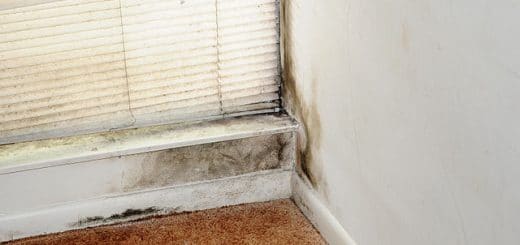Getting your Business Prepared for a Natural Disaster
While it is not in the power of man to prevent natural disasters, you can at least limit the extent of the damage and the associated negative repercussions on your life and business if you are well prepared. No amount of preparations will allow you to preserve your property intact in the event of a natural calamity, of course, but having an emergency preparednessPreparedness is the state of being ready to respond to emerg... More plan and taking adequate precautionary measures will help you minimize the negative impacts of the disaster and recover quickly and efficiently. When it comes to small businesses, proper preparationPreparation is the steps taken to ready a property, equipmen... More can actually mean the difference between successfully reopening within days after the disaster and shutting down forever. Considering the fact that one in three business owners have been reportedly affected by natural disasters in recent years, it is quite a good idea to get familiar with the best practices and necessary precautions that will allow you to stay afloat in times of crisis and to implement them as soon as possible. So, how to prepare for a natural disaster?
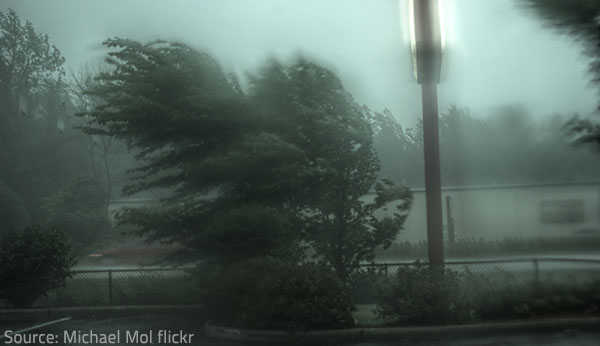
If your business is well prepared for natural disasters, an approaching storm is unlikely to cause panic among your employees.
1) Get Proper Insurance
The first step in preparing your business for a disaster is to review your insurance options and find out what different commercial policies cover, as well as the amount of coverage offered and the business’ deductibles.
- Property insurance covers the damage inflicted on company property – buildings, furnishing, equipment, electronics and documents;
- Business interruption coverage reimburses lost income that might have been generated during the interruption of your business in the aftermath of a natural disaster.
Have in mind that certain perils, such as floodingFlooding is the overflow or accumulation of water in areas t... More and earthquakes, are not automatically included in standard policies. So, in order to make an informed decision about your business, you need to evaluate the likelihood of different types of natural disasters that could affect your area and customize your policy to include coverage for these specific incidents.
Last but not least, review and update all the information regarding your property, its value, the number of employees on payroll, and all your assets to make sure you have sufficient coverage.
It is recommended to discuss the pros and cons of different insurance options with an insurance specialist to identify the most beneficial solutionA solution is a homogeneous mixture of two or more substance... More for your business.
2) Reduce Potential Risks
If you know which aspects of your business are most vulnerable to adverse weather conditions and different natural calamities, you will be able to take proper measures to decrease the potential threats and hazards. So, you need to determine the specific business areas and operations that will be worst affected by a certain type of natural disaster first. Then, you should come up with an effective strategy that will allow you to avoid substantial damage and major problems if a natural disaster strikes your area. An efficient risk mitigation strategy may include:

Sometimes as simple an act as pulling the switch at the right moment can prevent major accidents and great material losses.
- Installing quality fire-alarm systems, sump pumps, and other cutting edge protective equipment;
- Investing in a backup generator (or an uninterruptible power supply system) to keep your business operational during a power outage caused by a natural disaster long enough to safely shutdown your network, prevent damage to computers and other electronics, and evacuate employees safely;
- Using only safe materials in risky areas (non-combustible materials, water-proof materials, etc.);
- Inspecting the roofs and the foundations of the buildings on a regular basis and maintaining them in good condition;
- Keeping air ducts clean and the entire HVAC system in the building fully operational;
- Securing short and safe escape routes from the buildings.
Once you have taken the above steps to prepare for a natural disaster, you need to develop an efficient emergency response plan that will allow you not only to better protect your employees, your property, and your assets, but also to recover quickly and reopen your business soon after the disaster.
3) Create An Emergency Preparedness Plan
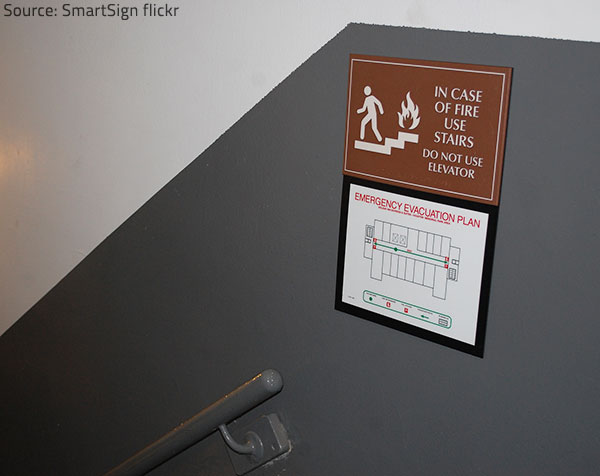
An efficient evacuation plan is clear and easy to follow.
Having a reliable disaster response plan is essential for ensuring the safety of the people in the affected buildings, limiting the property damage, reducing the financial impact, and resuming business in the shortest time possible. Of course, business preparednessPreparedness is the state of being ready to respond to emerg... More for hurricanes will have some specifics that will differ from a business fire preparednessPreparedness is the state of being ready to respond to emerg... More plan, or a business earthquake preparednessPreparedness is the state of being ready to respond to emerg... More plan, etc. (you can find useful specific information on how to prepare your business for different types of natural disasters here). However, certain precautions will be efficient in the event of any natural disaster, so your business preparednessPreparedness is the state of being ready to respond to emerg... More checklist should definitely include them. You are advised to:
- Create evacuation plans – identify the shortest and safest evacuation routes out of your property and train your employees to use them when necessary. Identify the safest places inside your commercial building(s) and instruct people to gather there if the circumstances necessitate them to stay under cover. Remind your employees to help ensure the safety of all the customers, business partners, and other people who are at your property when a disaster strikes;
- Post escape routes and emergency exit signs throughout the building – make sure the evacuation plans and directions posted on the walls are absolutely clear and easy to follow;
- Prepare a survival kit – it is of paramount importance to have all the basic survival necessities at hand in case you have to survive a couple of days without being able to get out of the building because of severe structural damage, or some other dangerous issues caused by an earthquake, tornado, flash flood, or another natural disaster. So, it is a good idea to store away some bottled water and non-perishable food, a first-aid kit, a number of essential tools, several flashlights, extra batteries, basic hygiene items, personal protection gear (especially dust masks and glasses), a signaling device, etc. Make sure all your employees know where to locate the survival kit and where to find emergency phone numbers;
- Plan how to prepare your office for the upcoming disaster (if time allows it) – designate a safe location to store sensitive equipment before the disaster strikes; find the location of the main power switch to be able to turn off the electricity before leaving the building (in order to decrease fire hazards); be ready to forward calls from your desk phone to a mobile phone; keep the most crucial company documents and/or valuables at hand so that you can easily take them with you during an evacuation, etc.;
- Designate a meeting place – decide on a safe place to meet after evacuating the building(s) to make sure that everyone is out of danger and to discuss your course of action over the next several days.
However reliable and efficient your disaster preparednessPreparedness is the state of being ready to respond to emerg... More plan may be, it will be of little use unless all the company employees know exactly what to do in the event of a natural calamity, fully understand their responsibilities, and respond to the emergency situation in a timely and adequate manner. To ensure that everyone is well informed and aware of the current circumstances, you need to implement an efficient communication strategy.
4) Establish A Communication Strategy

Make sure that all your employees know what to do in the event of a disaster.
Regular meetings will provide you the opportunity to discuss your business preparednessPreparedness is the state of being ready to respond to emerg... More, response, and recovery plans with all your employees and to keep them up to date with any recent supplements or changes in the basic evacuation plan. Make sure everyone understands the plan in meticulous details and knows their individual responsibilities during a disaster. Base the emergency roles within the company on seniority, not on specific individuals, as executives or other key employees may be out of the office when a disaster strikes.
Establish a reliable communication system to alert employees and other relevant people about an upcoming disaster and to inform them of your plan of action – phone calls, emails, social networks, etc. are all viable methods to contact employees and customers, business partners and shareholders, emergency workers and insurance companies, property damage restorationRestoration is the process of returning a property to its pr... More companies, etc. Not only will a good communication plan save time and confusion in the event of a disaster, but it will also help people stay focused on their tasks and will prevent panic.
Of course, you need to notify customers/clients and business partners of any potential delays in deliverables or services as soon as possible. Ask them to show understanding and sympathy in this difficult period and to allow you some extra time to complete your commitments. Reassure them that you will be able to recover shortly and continue your quality work.
5) Back Up Essential Information And Documentation
Recovering after a natural disaster will be much easier if you have saved all the important documents and databases of your business. Losing essential documentation (physical or electronic) can turn out to be catastrophic for your company, so you are strongly recommended to back up all the data that may be lost or damaged during a disaster:
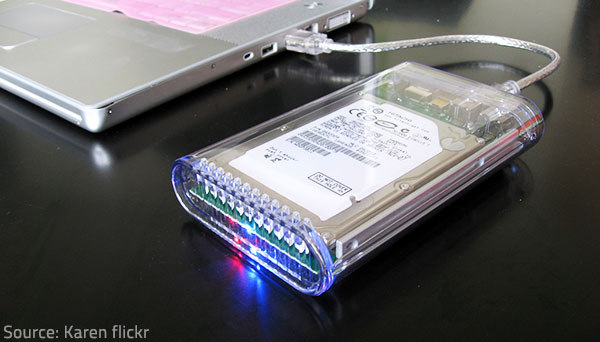
Better safe than sorry!
- Make copies of all the company documents and store the originals of the most crucial ones in a secure offsite location;
- Scan important paperwork (bank statements, tax returns, insurance policies, client files, etc.) and save the electronic files on an external drive that you keep offsite or use a cloud-based solutionA solution is a homogeneous mixture of two or more substance... More to make sure important data won’t be lost;
- Store all essential electronic data on digital media in an offsite facility;
- Back up data daily – mail to yourself anything that you are currently working on (use a Web server that can be accessed from anywhere) or store files in the cloud.
6) Plan For Off-Site Operation
In the aftermath of a major disaster you may not be able to use your commercial property for a while (until all the required restorationRestoration is the process of returning a property to its pr... More works are over). It is important to hire trustworthy and experienced restoration professionals to complete the task in a quick and efficient manner, so that you can resume your business as soon as possible.
However, it will be very good for your business if you are able to find a temporary location in the area where you will be able to continue working even without the conveniences of your own facility. So, if at all possible, establish an alternate work location and develop the required procedures for working remotely in the event of a natural disaster.
7) Plan A Recovery
A plan for business continuity will help you take quick and efficient measures to restore critical business functions within the shortest time possible. If you ensure organizational stability, you will be able to successfully reduce financial loss, minimize negative impacts, and resume normal business operations. To achieve this, you need to:
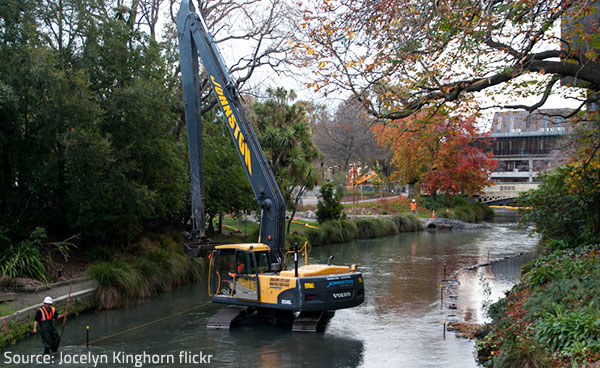
Plan for quick and efficient restorationRestoration is the process of returning a property to its pr... More works after a disaster that will allow you to resume your normal business operations as soon as possible.
- Properly document damage to ensure a smooth and beneficial claim process;
- Take immediate measures to salvage as much of your property as possible – take surviving documents, valuables, equipment, etc. to a safe location, and call a reputable property damage restoration company to prevent further damage and begin the restorationRestoration is the process of returning a property to its pr... More process as soon as possible;
- Retrieve essential documents and electronic files stored offsite;
- Migrate business operations to a recovery site and restore main business functions;
- Establish procedures for repairing the primary facility and returning to normal functioning.
One final piece of advice: Test and practice your preparednessPreparedness is the state of being ready to respond to emerg... More, response and recovery plans to make sure that your business is well prepared for a natural disaster.











